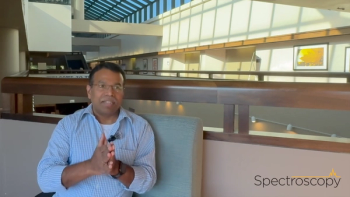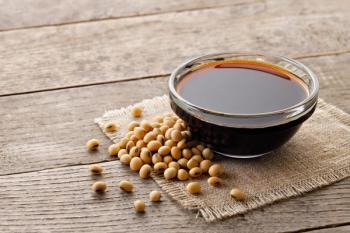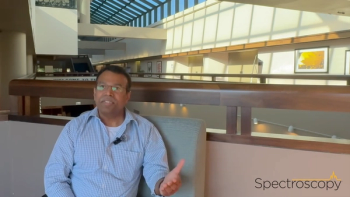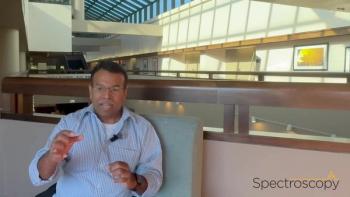
In Memory of James D. Winefordner (1931–2025)
Key Takeaways
- Winefordner's contributions to spectrochemical methods and instrumentation shaped analytical chemistry, with over 900 publications and significant research on detection limits.
- He mentored 168 Ph.D. students and over 100 postdoctoral researchers, emphasizing rigor and instrumental excellence, impacting academia and industry.
James Dudley Winefordner was a preeminent figure in analytical chemistry whose contributions to spectrochemical method development, instrumentation, and mentoring shaped generations of scientists.
James Dudley Winefordner was a preeminent figure in analytical chemistry whose contributions to spectrochemical method development, instrumentation, and mentoring shaped generations of scientists. Over more than six decades, he published over 900 papers, trained 168 Ph.D. students and over 100 postdoctoral researchers, secured substantial federal funding, and held leadership roles in editorial and professional societies. This memorial recounts his life and scientific legacy, emphasizing both professional achievements and personal qualities that endeared him to colleagues and family alike.
Winefordner was born on December 31, 1931, to Carl and Marjorie Brown Winefordner and passed away in 2025 after leaving a profound impact on the field of analytical chemistry. Early in his life he pursued excellence in scientific inquiry and would go on to mentor and inspire countless colleagues, students, and collaborators.
He completed his B.S. in 1954, M.S. in 1955, and Ph.D. in 1958 at the University of Illinois, working under H. V. Malmstadt (1,2). After a year of postdoctoral research at Illinois, he joined the University of Florida in September 1959 as an assistant professor of Chemistry, rising to Full Professor in 1965 and, in 1976, being appointed Graduate Research Professor (3). Over a career of more than half a century at the University of Florida, he served as a central intellectual force in its chemistry department.
Winefordner’s research addressed fundamental and practical challenges in spectrochemical analysis. He pursued the limits of detectability by combining theoretical modeling and instrumentation optimization. One of his notable papers, “Calculation of the Limit of Detectability in Atomic Emission Flame Spectrometry,” remains a foundational reference (DOI: 10.1021/ac60216a018) (4). His group also explored the use of laser‐induced plasmas, aerosol sampling, and plasma diagnostics in spectroscopic measurement (5).
Throughout his career he authored more than 900 scientific publications, 10 book chapters, and about 40 refereed reviews. He delivered more than 400 invited lectures and seminars worldwide, reflecting the broad impact of his work. His editorial service was exceptional: he sat on multiple journal advisory boards, acted as chairman of Talanta and Spectrochimica Acta B, and served for decades as editor of the Chemical Analysis book series published by Wiley (6). Within professional societies, he held top leadership roles, including in the Analytical Division of the American Chemical Society (ACS) and the Society for Applied Spectroscopy (SAS).
As a mentor, Winefordner’s record was nearly unparalleled. During his tenure at the University of Florida, 168 students earned Ph.D. degrees and 32 earned M.S. degrees under his guidance; more than 100 postdoctoral associates also worked in his group (6). These mentees have carried forward his emphasis on rigor, clarity, and instrumental excellence throughout academia and industry.
To support such an ambitious program, Winefordner raised over $25 million in individual grant funding across his career (3). These resources enabled the acquisition of sophisticated spectrometers, lasers, plasma sources, and the support of student travel and instrumentation development.
His professional affiliations included membership in the ACS, SAS, Phi Lambda Upsilon, Alpha Chi Sigma, and the American Association for the Advancement of Science (AAAS) (3).
Winefordner received numerous prestigious national and international honors throughout his distinguished career in analytical chemistry. Among his most notable recognitions were the ACS Award in Analytical Chemistry in 1973, the ACS Chemical Instrumentation Award in 1978, and the ANACHEM Award in 1980. He also received the Pittsburgh Analytical Chemistry/Spectroscopy Award in the mid-1980s, recognizing his impact on instrumental development and fundamental spectroscopy research. In 1989, he was honored with the New York Society for Applied Spectroscopy Gold Medal, and in 2004, the Lester W. Strock Award from the Society for Applied Spectroscopy and the Federation of Analytical Chemistry and Spectroscopy Societies. He was also the inaugural recipient of the ACS Division of Analytical Chemistry Award in Spectrochemical Analysis in 1987. Collectively, these honors reflect Winefordner’s pioneering influence in analytical instrumentation, spectrochemical method development, and the education of generations of analytical chemists worldwide (1–3).
Over time he accumulated nine distinguished awards from the University of Florida (including the 1984 Teacher–Scholar Award) and 23 national/international honors—the highest awards from SAS, the Pittsburgh Conference, Eastern Analytical Symposium, and prominent societies in Sweden, England, and Japan (3).
Beyond the laboratory, many remember Winefordner as warm, modest, and intellectually generous. He was deeply devoted to his family: married to Laura Whitney Winefordner for 68 years, and a loving father and grandfather. He was a gifted host and chef, with an extensive collection of cookbooks that shared shelf space with his scientific volumes. His facility for solving complex puzzles and love of laughter were well known. He especially cherished time at Flagler Beach, playing card games and making joyful memories. His affection for cats—initially a gift from his wife—grew into a lifelong bond; his final feline companion, Dudley, was scarcely absent from his side (1,2).
Winefordner leaves a legacy of scientific insight, mentorship, and humanity. His pioneering work on detection limits, spectroscopic instrumentation, and analytical rigor continues to inform how chemists approach trace analysis today. His presence—both inside and outside research—will be deeply missed.
References
(1) Milam Funeral Home, Inc. James Winefordner Page. Available at:
(2) Malmstadt, H. James D. Winefordner as a Student. Spectrochim. Acta, Part B 1994, 49 (12–14), 1147–1149. DOI:
(3) University of Florida Department of Chemistry, faculty appointment history and internal records. Available at:
(4) Winefordner, J. D. Calculation of the Limit of Detectability in Atomic Emission Flame Spectrometry. Anal. Chem. 1964, 36 (10), 2030–2033. DOI:
(5) University of Florida, “James D. Winefordner, Professor Emeritus,” UF Chemistry departmental profile. Available at:
(6) Wiley Chemical Analysis series editorial records; journal board archives (Wiley / publisher records). Available at:
Newsletter
Get essential updates on the latest spectroscopy technologies, regulatory standards, and best practices—subscribe today to Spectroscopy.





